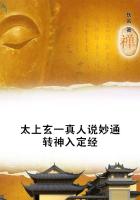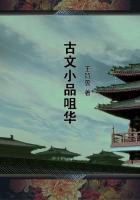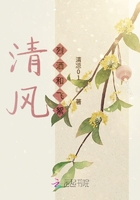When we read the lives of the most eminent painters, every page informs us that no part of their time was spent in dissipation.Even an increase of fame served only to augment their industry.To be convinced with what persevering assiduity they pursued their studies, we need only reflect on their method of proceeding in their most celebrated works.When they conceived a subject, they first made a variety of sketches; then a finished drawing of the whole; after that a more correct drawing of every separate part, heads, hands, feet, and pieces of drapery; they then painted the picture, and after all re-touched it from the life.The pictures, thus wrought with such pain, now appear like the effect of enchantment, and as if some mighty genius had struck them off at a blow.
But, whilst diligence is thus recommended to the students, the visitors will take care that their diligence be effectual; that it be well directed and employed on the proper object.A student is not always advancing because he is employed; he must apply his strength to that part of the art where the real difficulties lie; to that part which distinguishes it as a liberal art, and not by mistaken industry lose his time in that which is merely ornamental.The students, instead of vying with each other which shall have the readiest band, should be taught to contend who shall have the purest and most correct outline, instead of striving which shall produce thebrightest tint, or, curiously trifling endeavour to give the gloss of stuffs so as to appear real, let their ambition be directed to contend which shall dispose his drapery in the most graceful folds, which shall give the most grace and dignity to the human figure.
I must beg leave to submit one thing more to the consideration of the visitors, which appears to me a matter of very great consequence, and the omission of which I think a principal defect in the method of education pursued in all the academies I have ever visited.The error I mean is, that the students never draw exactly from the living models which they have before them.It is not indeed their intention, nor are they directed to do it.Their drawings resemble the model only in the attitude.They change the form according to their vague and uncertain ideas of beauty, and make a drawing rather of what they think the figure ought to be than of what it appears.I have thought this the obstacle that has stopped the progress of many young men of real genius; and I very much doubt whether a habit of drawing correctly what we see will not give a proportionable power of drawing correctly what we imagine.He who endeavours to copy nicely the figure before him not only acquires a habit of exactness and precision, but is continually advancing in his knowledge of the human figure; and though he seems to superficial observers to make a slower progress, he will be found at last capable of adding (without running into capricious wildness) that grace and beauty which is necessary to be given to his more finished works, and which cannot be got by the moderns, as it was not acquired by the ancients, but by an attentive and well-compared study of the human form.
What I think ought to enforce this method is, that it has been the practice (as may be seen by their drawings) of the great masters in the art.I will mention a drawing of Raffaelle, "The Dispute of the Sacrament," the print of which, by Count Cailus, is in every hand.It appears that he made his sketch from one model; and the habit he had of drawing exactly from the form before him appears by his ****** all the figures with the same cap, such as his model then happened to wear; so servile a copyist was this great man, even at a time when he was allowed to be at his highest pitch of excellence.
I have seen also academy figures by Annibale Caracci, though he was often sufficiently licentious in his finished works, drawn with all the peculiarities of an individual model.
This scrupulous exactness is so contrary to the practice of the academies, that it is not without great deference that I beg leave to recommend it to the consideration of the visitors, and submit it to them, whether the neglect of this method is not one of the reasons why students so often disappoint expectation, and being more than boys at sixteen, become less than men at thirty.
In short, the method I recommend can only be detrimental when there are but few living forms to copy; for then students, by always drawing from one alone, will by habit be taught to overlook defects, and mistake deformity for beauty.But of this there is no danger, since the council has determined to supply the academy with a variety of subjects; and indeed those laws which they have drawn up, and which the secretary will presently read for your confirmation, have in some measure precluded me from saying more upon this occasion.Instead, therefore, of offering my advice, permit me to indulge my wishes, and express my hope, that this institution may answer the expectations of its royal founder; that the present age may vie in arts with that of Leo X.and that "the dignity of the dying art" (to make use of an expression of Pliny) may be revived under the reign of George III.















